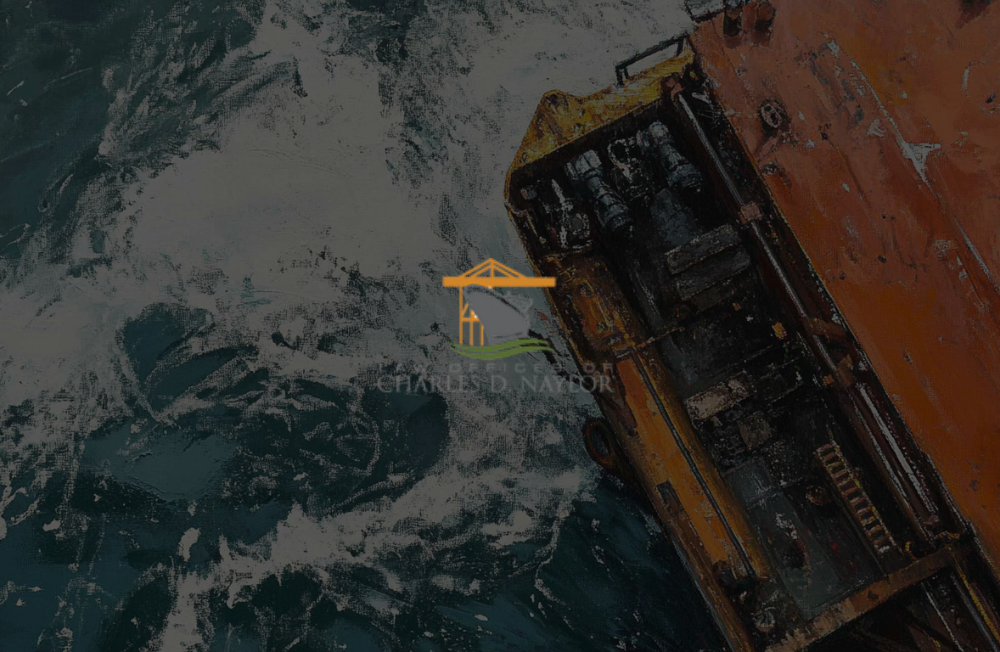If you’ve ever wondered how dangerous oil rig work is, the stark reality is that it ranks among the most perilous occupations in the United States.
People working on these sometimes isolated sites generally do long shifts, perform physically strenuous activities, and are constantly surrounded by harsh and erratic environmental conditions.
Offshore oil rig personnel often handle sophisticated and strong machinery under tremendous pressure — a mix of the environment’s physical forces and the operation’s high-stakes character.
Sadly, mishaps can happen at terrible speed and frequently entail the potential for significant and maybe catastrophic results.
Not only in Long Beach, California, but throughout the business, this article seeks to analyze the several hazards present in working on oil rigs, explore the common elements causing injury and death, and offer vital insight into the legal channels open to injured oil field workers.

What Makes Oil Rig Work So Dangerous?
The inherent risks of oil rigging produce a high-stakes situation whereby even daily chores can rapidly become dangerous.
Highly combustible materials, erratic and sometimes severe weather, the remote character of many work locations, and the rigorous, long work schedules all help create an environment where the danger of significant injury or death is much increased.
Risky oil rig work remains a significant issue for workers and their families, even with improved safety rules and technologies.
- Heavy Machinery and Equipment Malfunctions:
Essential for extraction and operation, oil rigs are a complicated network of robust drilling equipment, tall cranes, heavy-duty hoists, and high-pressure pipelines.
Still, the sheer nature of this equipment raises significant hazards.
A sudden breakdown brought on by wear and tear, poor maintenance, or human error in operation can have disastrous results, including personnel being caught in hazardous machinery, suffering terrible amputations, or being crushed by equipment. Another ongoing hazard is explosions brought on by equipment breakdown.
- Slip, Trip, and Fall Hazards:
Working on an oil rig might expose one to slip, trip, and fall hazards from slippery and unstable surroundings.
Many slip hazards exist on decks and pathways from oil, drilling mud, water, and chemicals.
The intricate layout of rigs and platforms increases the risk of trips and falls, which have several levels and possible impediments.
On these buildings, falls from notable heights can cause serious traumatic brain injuries, crippling spinal cord injury, or sadly, death.
- Explosions and Fires:
The foundation of oil rig activities is the handling and extraction of extremely combustible natural gas and crude oil.
Because of their natural flammability, even a seemingly small mistake or a small spark might start a major calamity.
With tragic events like the Deepwater Horizon explosion acting as sobering reminders of the possibility for massive destruction, loss of life, and long-term environmental damage, history documents the terrible hazards offshore workers endure.
- Fatigue and Human Error:
Sometimes for weeks, the rigorous nature of oil field work forces personnel to complete 12-hour shifts with little time for rest and rehabilitation.
This unrelenting work schedule always causes significant tiredness.
Workers who are physically and psychologically tired may find their judgment compromised, their reaction times slowed, and their likelihood of making critical mistakes that may cause major mishaps considerably rises.
The hazards described above clearly show how dangerous oil rig labor is.
If you or a loved one has been hurt working on an oil rig, you need to be aware of your rights and choices for compensation.
For a free and private consultation, contact the seasoned maritime attorneys of the Law Offices of Charles D. Naylor. Our goal is to assist wounded offshore workers in Long Beach, California, and beyond in negotiating the complexity of maritime law and getting the justice they are due.
Oil Rig Deaths Per Year: What the Numbers Say
The question of how dangerous is oil rig work is underscored by stark statistics that consistently place oil and gas extraction among the most hazardous industries in the United States.
Data show that, almost seven times the norm for all U.S. workers, the death rate among oil field workers is shockingly high. Although exact annual numbers vary, statistics show that this industry accounts for dozens of deaths annually.
For example, a research study looking at the oil and gas extraction sector found 470 worker deaths between 2014 and 2019. Many times, these tragic events follow from:
Transportation incidents:
Particularly, helicopter crashes during transit to and from offshore rigs, and motor vehicle accidents on land. Transportation incidents account for a significant percentage of oil and gas extraction fatalities.
Contact with objects and equipment:
Workers are being struck by moving machinery, falling equipment, or getting caught in pinch points. This remains a leading cause of on-site fatalities.
Fires and explosions:
The volatile nature of oil and gas makes these catastrophic events a constant threat, despite safety measures.
Exposure to harmful substances:
Inhalation of toxic gases or contact with dangerous chemicals can lead to immediate fatalities or long-term health issues contributing to premature death.
While stringent safety regulations enforced by agencies such as OSHA (Occupational Safety and Health Administration) and the Bureau of Safety and Environmental Enforcement (BSEE) aim to mitigate these risks, the inherent dangers of the work environment mean that fatal accidents tragically continue to occur in the oil and gas industry.
Common Injuries Among Oilfield Workers
Even non-fatal incidents can result in life-changing injuries. These include:
- Broken bones
- Traumatic brain injuries (TBI)
- Burns and disfigurement
- Back injuries and herniated discs
- Lung damage from inhaling toxic fumes
- Crush injuries from heavy machinery
Such injuries often require long-term medical care, rehabilitation, and time away from work, sometimes permanently.
Working Conditions on Offshore Oil Rigs
Unlike most employment, working on an oil rig is unique. Often cut off from land and medical services, offshore workers spend weeks or even months living aboard the rig.
With loud noises, high-pressure systems, and round-the-clock operations, the surroundings are physically and psychologically taxing.
Mental Health and Isolation
Long distances from family, little leisure time, and high-stress surroundings all affect mental health. Among offshore oil riggers, depression, anxiety, and substance misuse are not unusual.
Weather and Natural Elements
Oil rigs must withstand intense storms, including hurricanes and strong waves. Strong storms might stop activities and endanger crew members’ safety.
The rigorous and hazardous nature of offshore oil rig employment emphasizes the great sacrifices these people make.
Remember, you are not alone if you or someone you know has suffered injuries working offshore.
The seasoned marine attorneys at the Law Offices of Charles D. Naylor are committed to safeguarding your rights and know the particular difficulties you encounter.
Get in touch right now for a free and private consultation to go over your circumstances and investigate your legal alternatives. Let us guide you across the complexity and fight for your due pay.
How Much Do Oil Rig Workers Make?
Many are drawn to oil rigging for the high pay despite the dangers. Offshore oil rig workers can earn between $50,000 and $100,000 per year, depending on role and experience. Highly skilled positions like drill operators and engineers can earn significantly more.
While the salary can be enticing, it often comes at a steep physical and emotional cost.
Are Safety Regulations Enough?
Agencies like OSHA and BSEE have implemented comprehensive guidelines to protect oil rig workers. These include safety drills, emergency response plans, protective gear requirements, and equipment inspections.
However, enforcement is inconsistent. Many injuries occur due to:
- Lax training protocols
- Inadequate safety inspections
- Negligence by employers or contractors
- Pressure to meet production quotas over safety
This is where legal advocacy plays a vital role. Offshore workers are protected under specific maritime laws that may allow them to pursue compensation for workplace injuries.
Legal Protections for Oil Rig Workers
When oil field workers are injured due to negligence, they may be entitled to financial compensation under laws specific to maritime labor.
The Jones Act
The Jones Act allows injured seamen to file claims against their employers for negligence. If an unsafe condition or careless act leads to injury, a worker may be eligible for damages related to medical care, lost wages, and pain and suffering.
General Maritime Law
This law provides for “maintenance and cure”—basic living expenses and medical treatment—until the worker reaches maximum medical improvement. It also protects against unseaworthiness, where a vessel is not adequately equipped or maintained.
Learn more about these protections on our cruise ship injury attorney page, as many principles of maritime law apply similarly to cruise ship crew and oil rig personnel.
Steps to Take After an Oil Rig Injury
If you or someone you know is injured on an offshore oil rig, follow these key steps:
- Seek Immediate Medical Help
Always prioritize your health. Get evaluated and document all injuries.
- Report the Incident
Notify your employer or supervisor as soon as possible.
- Gather Evidence
Take photos, get witness names, and journal your symptoms and treatment.
- Consult a Maritime Attorney
These cases are highly complex. A specialized maritime attorney can help you understand your rights under the Jones Act or other maritime laws.
Real Testimonials, Real Results
At the Law Offices of Charles D. Naylor, we’ve seen firsthand how devastating offshore injuries can be. Our firm has secured millions for injured maritime workers and their families.
You can read client testimonials to see how we’ve helped others facing similar challenges in the oil and gas industry.
Safety Tips for Oilfield Workers
While some risks are out of your control, here are proactive steps oilfield workers can take to reduce injury:
Always wear personal protective equipment (PPE)
Stay alert—especially near machinery
Participate in safety drills and training sessions
Speak up about unsafe conditions
Take breaks to manage fatigue
Even with the best precautions, injuries happen. That’s why it’s crucial to know your rights and have legal guidance ready when you need it.
Oil Rig Work Is Dangerous—Know Your Rights and Get Legal Help
So, how dangerous is oil rig work? The answer is clear: it’s one of the riskiest professions out there, with physical and legal complexities most workers aren’t fully prepared to face alone. If you’ve been injured working on an offshore rig, you deserve experienced legal support to help recover damages and protect your future.
The Law Offices of Charles D. Naylor is committed to representing offshore workers and their families. Call our cruise injury hotline or visit our contact page for a free consultation. You can also get a free case review and watch our video on cruise ship injuries and your rights to understand how maritime injury law can work for you.
Don’t wait—get the help you need from a law firm that understands the sea, the rig, and the stakes.
FAQs about the dangers of oil rig work
How Dangerous Is Oil Rig Work?
The statistics paint a sobering picture: oil and gas extraction consistently ranks among the most hazardous industries in the U.S.
The fatality rate for oil field workers is, on average, significantly higher than that of other occupations. This elevated risk stems from the demanding and dangerous work environment.
How dangerous is oil rig work compared to other jobs?
Extremely dangerous. How dangerous is oil rig work is evident in fatality rates that are multiple times higher than the national average across all industries.
What are some common dangers on oil rigs?
The perils are numerous, including accidents involving heavy machinery and equipment malfunctions, the constant threat of slips, trips, and falls on slick surfaces, the ever-present risk of explosions and fires due to the volatile materials handled, and the debilitating effects of fatigue and human error stemming from long work hours.
Are offshore oil rig workers often isolated?
Yes, a defining characteristic of offshore work is the frequent and extended periods of isolation. Workers often spend weeks or even months living aboard the rig, far removed from their families and the support networks they have on land. This isolation can significantly impact their mental well-being.
Does weather play a significant role in oil rig dangers?
Absolutely. Oil rigs are exposed to the full force of nature, and they must be engineered to withstand severe storms, including hurricanes, as well as strong winds and powerful waves. These extreme weather conditions can halt operations and directly endanger the safety of all crew members on board.
What are the mental health challenges faced by oil rig workers?
The combination of prolonged isolation, demanding and often unpredictable work schedules, and the high-stress environment of a dangerous workplace can take a significant toll on mental health. Depression, anxiety, and substance misuse are unfortunately not uncommon among offshore oil rig workers.









